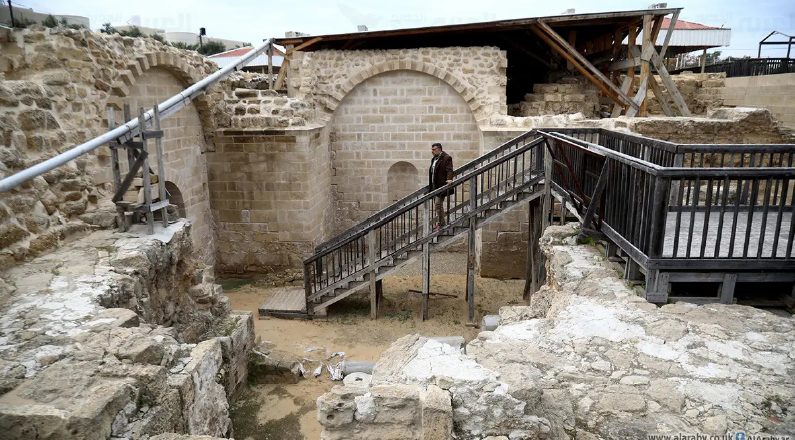(ZENIT News / Arab News, 08.11.2024).- An ancient Christian monastery in Gaza was recognized as a World Heritage in Danger site during a UNESCO session in New Delhi last Friday 2 august, Arab News reports.
Founded around 340 CE by Saint Hilarion, the monastery is part of Tell Umm Amer, an archaeological site located in the Nuseirat refugee camp of Gaza’s Deir Al-Balah governorate.
After being originally submitted for inscription by the Permanent Delegation of Palestine to UNESCO in 2012, its nomination was processed on an emergency basis, during the World Heritage Committee’s ongoing annual session.
Ambassador Mounir Anastas, Palestine’s permanent delegate to the UN’s cultural agency, welcomed the inscription as giving hope to the people of Gaza in the wake of the ongoing Israeli attacks, which since October have killed at least 40,000 people and destroyed most of the Palestinian enclave’s infrastructure.
«It constitutes a message of hope to our people in Gaza who are fleeing bombing, who have no shelter, no water, no food.
Nevertheless, they are committed to protect their heritage because this heritage is part of our people’s memory and history,» Anastas told Arab News on the sidelines of the UNESCO session.
The recommendation was submitted by Belgium and sponsored by 18 other members of the current World Heritage Committee, who resorted to the emergency procedure provided for in the World Heritage Convention, and agreed to inscribe the Saint Hilarion monastery complex both on the World Heritage list and on the list of the World Heritage in Danger.
Under the terms of the convention, its 195 states parties – including Israel – are barred from directly or indirectly damaging the site and are committed to providing their cooperation for its protection.
«Once the site is enshrined on the World Heritage in Danger list, this means that all state parties to the convention are responsible for the protection and promotion of the site,» Mounir said.
«And this is also another strong message from the international community to our people in Gaza, saying that the international community did not forget you.»
Saint Hilarion was a native of the Gaza region and is considered the father of Palestinian monasticism. His monastery used to be an important station on the crossroads between Egypt, Palestine, Syria and Mesopotamia, and is associated with the phenomenon of monastic desert centres during the Byzantine period. It also bears testimony to Christianity in Gaza.
One of the oldest monasteries in the Middle East, the complex consists of two churches, a burial site, a baptism hall, a public cemetery, an audience hall, and dining rooms.
At least 207 archaeological sites and buildings of cultural and historical significance, out of a total of 320, have been reduced to rubble or severely damaged by Israel’s deadly military onslaught and indiscriminate bombardment of the Gaza Strip for the last 10 months.
These include the Orthodox Church of Saint Porphyrios – the world’s third oldest church – the 12th-century Great Omari Mosque and the nearby Al-Qissariya medieval Old City market, Gaza’s ancient seaport dating to 800 BCE, a Philistine cemetery dating to the Late Bronze period 1550-1200 BCE.
The destruction of many of the archaeological sites was detailed in South Africa’s case against Israel for the crime of genocide at the International Court of Justice. The case argues that the mass-scale killing and destruction of cultural heritage in Gaza demonstrates the Israeli leadership’s intent to destroy the Palestinian people and their cultural identity.
Thank you for reading our content. If you would like to receive ZENIT’s daily e-mail news, you can subscribe for free through this link.



